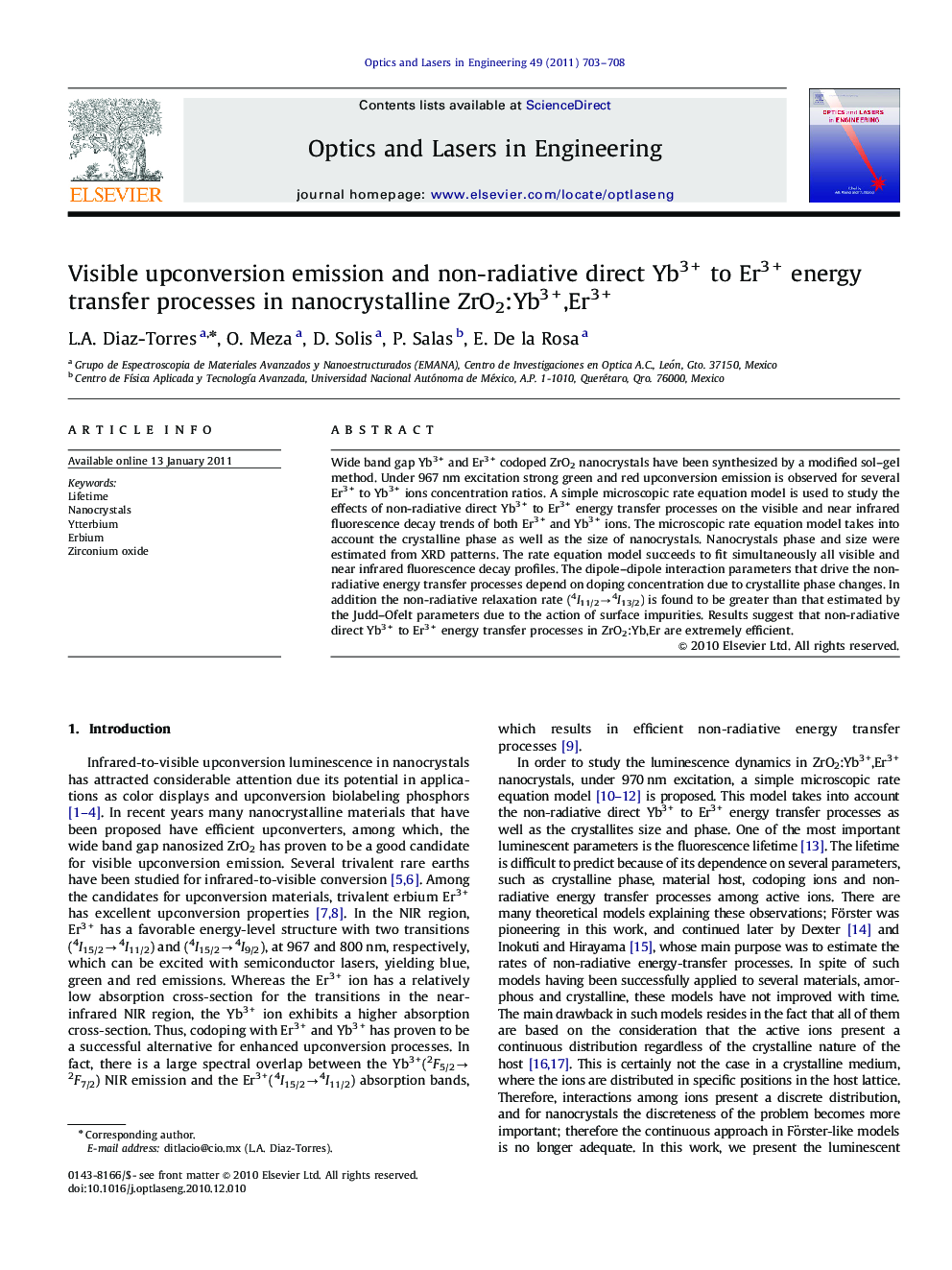| Article ID | Journal | Published Year | Pages | File Type |
|---|---|---|---|---|
| 734969 | Optics and Lasers in Engineering | 2011 | 6 Pages |
Wide band gap Yb3+ and Er3+ codoped ZrO2 nanocrystals have been synthesized by a modified sol–gel method. Under 967 nm excitation strong green and red upconversion emission is observed for several Er3+ to Yb3+ ions concentration ratios. A simple microscopic rate equation model is used to study the effects of non-radiative direct Yb3+ to Er3+ energy transfer processes on the visible and near infrared fluorescence decay trends of both Er3+ and Yb3+ ions. The microscopic rate equation model takes into account the crystalline phase as well as the size of nanocrystals. Nanocrystals phase and size were estimated from XRD patterns. The rate equation model succeeds to fit simultaneously all visible and near infrared fluorescence decay profiles. The dipole–dipole interaction parameters that drive the non-radiative energy transfer processes depend on doping concentration due to crystallite phase changes. In addition the non-radiative relaxation rate (4I11/2→4I13/2) is found to be greater than that estimated by the Judd–Ofelt parameters due to the action of surface impurities. Results suggest that non-radiative direct Yb3+ to Er3+ energy transfer processes in ZrO2:Yb,Er are extremely efficient.
Research highlights► A microscopic rate equations model allows to study upconversion processes in our earth doped nanocrystals. ► The visible upconversion direct Yb to Er energy transfer processes are quantified. ► The non-radiative relaxation rate Er(4I11/2→4I13/2) is found to be greater than that estimated by the Judd–Ofelt theory. ► Estimated Förster distances depend on dopant concentration as well as on nanocrystallite size and phase.
